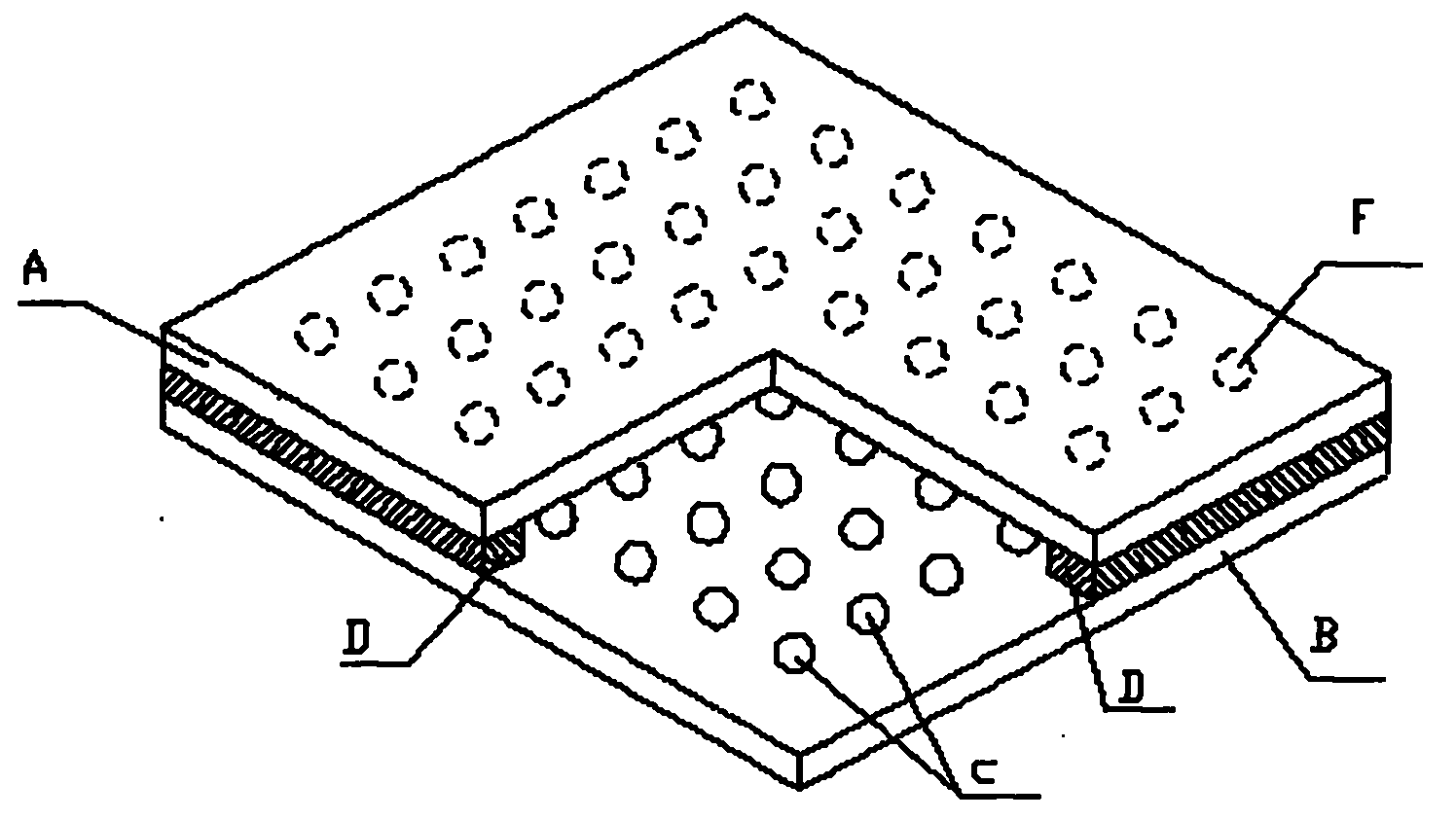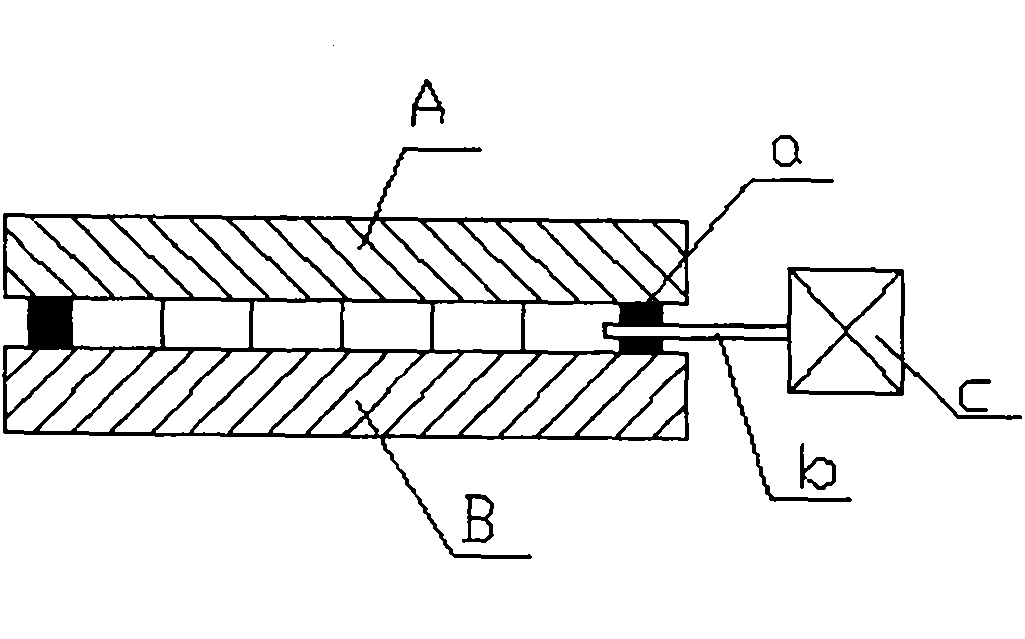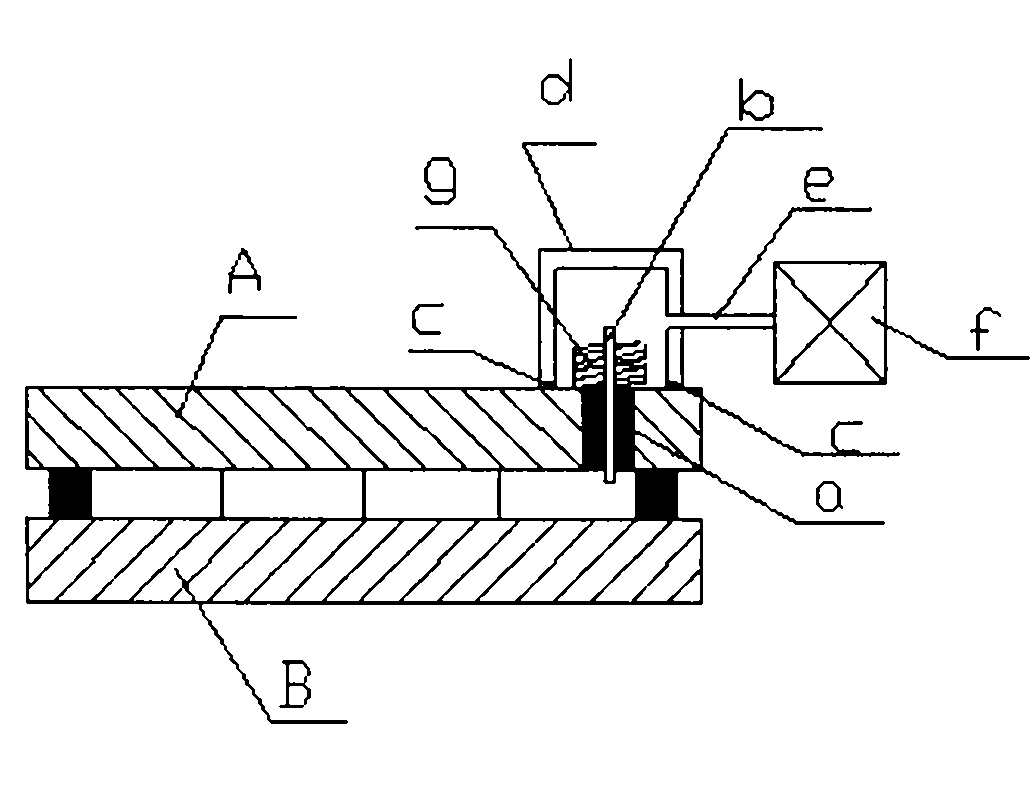Exhaust pipe-free air-tight sealing method and device for vacuum glass exhaust port
A vacuum glass and hermetic sealing technology, which is applied in the field of airtight sealing of vacuum glass exhaust ports without exhaust pipes, and in the field of airtight joints of vacuum glass exhaust ports without exhaust pipes, achieving low mechanical strength, beautiful exhaust ports, The effect of high vacuum
- Summary
- Abstract
- Description
- Claims
- Application Information
AI Technical Summary
Problems solved by technology
Method used
Image
Examples
Embodiment 1
[0031] (1) Cut, edge and clean the original glass plate according to the required size. The original glass plate can be ordinary float glass, tempered glass, various coated glass, self-cleaning glass, low-emissivity glass, high visible light transmittance glass and so on.
[0032] (2) Use a mechanical drill or a laser drilling machine to make an exhaust hole with a diameter of 3mm on a glass plate. This piece of glass is called the front substrate glass. Correspondingly, the other piece of glass is called the rear substrate glass.
[0033] (3) The front glass substrate and the rear glass substrate are stacked face to face, and the edges of the front and rear glass substrates are hermetically sealed with low-melting glass.
[0034] (4) Prepare a rheological slurry suitable for screen printing with non-crystalline low-melting glass powder and organic solution. The sealing temperature of this low-melting glass powder is 30°C lower than that of the low-melting sealing glass that ...
Embodiment 2
[0039] (1) Cut, edge and clean the original glass plate according to the required size. The original glass plate can be ordinary float glass, tempered glass, various coated glass, self-cleaning glass, low-emissivity glass, high visible light transmittance glass and so on.
[0040] (2) Use a mechanical drill or a laser drilling machine to make an exhaust hole with a diameter of 3.5mm on a glass plate. This piece of glass is called the front substrate glass, and the other piece of glass is called the rear substrate glass accordingly.
[0041] (3) The front glass substrate and the rear glass substrate are stacked face to face, and the edges of the front and rear glass substrates are hermetically sealed with low-melting glass.
[0042] (4) Prepare a rheological slurry suitable for screen printing with non-crystalline low-melting glass powder and organic solution. The sealing temperature of the low-melting glass powder is 20°C lower than that of the low-melting sealing glass seali...
PUM
| Property | Measurement | Unit |
|---|---|---|
| Thickness | aaaaa | aaaaa |
| Thickness | aaaaa | aaaaa |
| Diameter | aaaaa | aaaaa |
Abstract
Description
Claims
Application Information
 Login to View More
Login to View More - R&D
- Intellectual Property
- Life Sciences
- Materials
- Tech Scout
- Unparalleled Data Quality
- Higher Quality Content
- 60% Fewer Hallucinations
Browse by: Latest US Patents, China's latest patents, Technical Efficacy Thesaurus, Application Domain, Technology Topic, Popular Technical Reports.
© 2025 PatSnap. All rights reserved.Legal|Privacy policy|Modern Slavery Act Transparency Statement|Sitemap|About US| Contact US: help@patsnap.com



